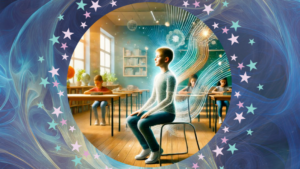At the very earliest stage of human life, as a newly fertilised egg, the body is composed of approximately 95% water. As we grow and mature, this figure gradually lowers to around 70% in adulthood. These numbers alone are remarkable. But what they really do is open the door to a bigger, more thought-provoking question: what is water, really?
To the naked eye, water is simple, transparent, and uniform. But just beneath this surface-level appearance lies a world of astonishing complexity – a world that responds, reacts, and reflects the environments it is exposed to. It’s here that the groundbreaking work of the late Dr Masaru Emoto invites us to think differently.
Water Has Memory – and It Responds
Dr Emoto’s internationally discussed experiments involved exposing water to different words, sounds, music, and intentions, then freezing it and photographing the resulting crystals. What he found was striking: beautiful, symmetrical crystals formed in response to positive stimuli like “love” or classical music, while distorted, chaotic structures appeared when exposed to anger, hatred, or heavy metal music.

In other words, water does not simply contain information in a passive sense; it appears to absorb, encode and respond to it in ways that challenge traditional understandings of biology and consciousness. This suggests that water, our most essential life substance, functions not only as a physical medium but also as an informational field – capable of receiving subtle energetic impressions from its surroundings. Just as ink is drawn into the fibres of paper, so too can vibrations, words and emotional tones imprint themselves into the water, subtly altering its internal structure.
In this light, water reveals itself not merely as a chemical compound, nor just a resource – but as a resonant mirror, quietly reflecting the quality of the environment it inhabits – both around us and within us. For us at VHE, Emoto’s findings are more than intriguing – they’re profoundly relevant.
If water, the primary substance of our bodies, reacts so clearly to vibration, emotion, and intention, then how we treat ourselves and each other has very real implications on our biology. This is why, in our youth workshops, we introduce the concept of water not only as a life-giving element, but also as a mirror – a substance that reflects the social, emotional and energetic environment it is in.
Emotions, Frequencies, and Health-Building
Through this lens, we help young people understand that negative emotions – such as shame, fear, anger or prolonged unease – may be expressions of disharmonious, unbalanced frequencies. Like water that has been exposed to chaotic noise, these emotional states can distort our internal environment and impact health on multiple levels.
Conversely, positive emotional states – joy, gratitude, love – resonate harmoniously, fostering not only inner balance but, as Emoto’s work suggests, a kind of cellular-level beauty and coherence. Just as harmony supports the balance and integrity of our internal waters, so too does it contribute to the vitality of our rivers, lakes and oceans. When we cultivate a more conscious, emotionally aware relationship with ourselves and one another, we lay the groundwork for a more respectful, regenerative relationship with the waters of the Earth -reinforcing the idea that inner wellbeing and environmental stewardship are deeply interconnected.
So when we ask, “Does water absorb information?”, the evidence urges us to say yes. Following this premise opens up a pathway of enquiry: what are we feeding our own (as well as others’) internal waters with every thought, word, and interaction?
From Inner Waters to Outer Environments
This connection between internal coherence and external responsibility is critical. If we know that water is sensitive to its environment, then how much more important is it to treat our rivers, lakes, and oceans with reverence and care?
Vibrant Health Education encourages students to see themselves as part of a broader water system – not just consumers of water, but guardians of its purity. When children grasp the brilliance of this substance – as a physical, emotional, and energetic carrier – they often begin to feel empowered to protect it.
Water is not just a necessity; it’s a living metaphor. It teaches flow, adaptability, resilience. It reminds us of our connection to all life. And most powerfully, it shows us that what we cannot see still matters – that intention, emotion and “vibe”, or frequency, leave imprints, just like Emoto’s frozen crystals reveal.
Imagine the ripple effect of students who understand this during their early formative years of development. Not just intellectually, but viscerally – in how they treat their peers, their planet, and their own bodies.
This is the power of applied, alive knowledge – the very core of what we bring to classrooms through our work at VHE.
If you’re an educator, practitioner, or school interested in bringing this kind of alive, integrative learning to young people – get in touch, we’d love to hear from you.
Let’s raise a generation who understands the wisdom of water – inside and out.
In health,
#vhedu❤️





